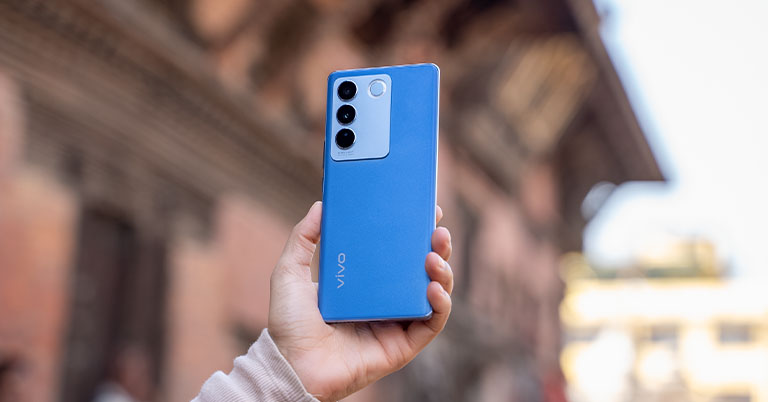
Under Vivo’s latest “V” series of premium midrange phones, only the vanilla Vivo V27 has officially arrived in Nepal. And Vivo Nepal will most likely not launch the V27 Pro and the premium “X” series of phones that are more expensive than this guy. I used the Vivo V27 for more than two weeks as my primary phone, while also comparing it against Samsung’s Galaxy A54 (review). And here’s my full review of the Vivo V27.
Vivo V27 Review: Specifications
- Body: 74.8 x 164.1 x 7.36mm, 180gm, Glass front/back, Plastic frames, No IP rating
- Display: 6.78-inches AMOLED panel, 120Hz refresh rate, 240Hz touch sampling rate, HDR10+
- Other Properties: 1300 nits peak brightness, 3D curved finish
- Resolution: FHD+ (2400 x 1080 pixels), 388 PPI, 20:9 aspect ratio
- Chipset: MediaTek Dimensity 7200 5G (6nm mobile platform)
- CPU: Octa-core:
– 2x Cortex-A715 (2.80 GHz)– 6x Cortex-A510 (2.0 GHz)
- GPU: Arm Mali-G610 MC4
- Memory: 8/12GB LPDDR5 RAM, 128/256GB UFS 3.1 storage (fixed)
- Software & UI: Android 13 with Vivo’s Funtouch OS 13 on top
- Rear Camera: Triple (with “Aura Light” LED flash);
– Wide: 50MP Sony IMX766V, f/1.88, 1/1.56″ sensor, OIS
– Ultrawide: 8MP, f/2.2, 120° FoV
– Macro: 2MP, f/2.4 (fixed focus) - Front Camera: 50MP, f/2.5 sensor (hole-punch cutout)
- Audio: Mono speaker, No 3.5mm headphone jack
- Security: In-display fingerprint sensor (Optical)
- Sensors: Accelerometer, Ambient light, E-compass, Gyroscope, Proximity
- Connectivity: Dual-SIM (Nano), WiFi 5 (Dual-band), Bluetooth 5.3, GPS / AGPS / Galileo / Glonass / QZSS / Beidou / NavIC, USB-C, NFC, 4G LTE (VoLTE), 5G
- Battery: 4600mAh with 66W fast charging (66W adapter provided)
- Color Options: Noble Black, Flowing Gold, Magic Blue, Emerald Green
- What’s Inside The Box: Vivo V27, USB-A to USB-C cable, 66W power adapter, SIM ejector tool, Transparent case, User manual and other documents
- Price in Nepal: NPR 58,999 (8/256GB)
- Buy Vivo V27 here
Vivo V27 Review:
Design and Build
- 74.8 x 164.1 x 7.36mm, 180 grams
- Glass front/back, Plastic frames
- No IP rating
Vivo phones are pretty well-known for their attractive design and the V27 series maintains the same impression. The Vivo V27 offers a stunning look with an elegant design and premium glass-sandwich quality. And the phone feels absolutely incredible to hold. At just 180 grams, it is also quite lightweight. Whereas the phone’s “Magic Blue” colorway has a marble-like finish and a color-changing back. And under the influence of sunlight or other UV rays, it transforms from light blue to dark.
Pretty cool!
Other than this, the dual curved finish further adds to the phone’s premium hands-on feel. The buttons are also positioned at just the right spot and can be reached without any struggle. Its camera housing also looks a lot minimalistic with 3 lenses and a circular LED flash called “Aura Light”.
But despite all its design wins, Vivo V27 does not have an IP rating, which is a quite disappointment considering its price. To compare, Samsung’s Galaxy A54 and even cheaper Galaxy A34 (review) bear an official IP67 rating against dust and water damage. And another disappointing thing about this phone is that Vivo has still settled with a single down-firing speaker instead of a proper stereo speaker setup. Likewise, its haptic feedback is just average too.
Display
- 6.78-inches FHD+ AMOLED panel
- 120/240Hz refresh/touch sampling rate
- No Gorilla Glass protection
As for the display, you’re looking at a 6.78-inch FHD+ AMOLED panel that supports HDR10+ and is Widevine L1 certified for hi-res playback. But despite its HDR10+ support, it can’t stream HDR videos on OTT platforms like Netflix just yet. So hopefully Vivo V27 will get Netflix HDR10 certification pretty soon.
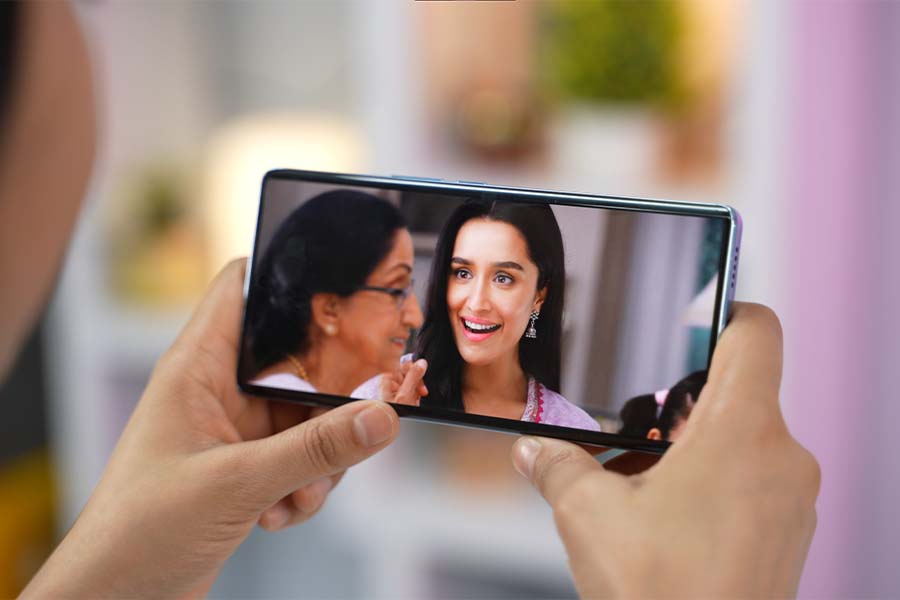
Anyway, Vivo has finally moved away from a pesky teardrop notch to a proper hole-punch cutout this time, which looks quite modern. And although this is a curved display, I didn’t come across accidental touches all that much except for a few times when I was gaming. This screen gets plenty bright too, and I had no trouble reading contents off of it in bright outdoor conditions.
But my biggest complaint with Vivo V27’s display has to be its refresh rate optimization. This is a 120Hz display alright, but it’s clear that the company hasn’t tuned it well across the phone. As a result, I noticed stutters when using different system apps like launchers and settings on multiple occasions.
Performance
- Octa-core MediaTek Dimensity 7200 5G SoC (4nm)
- 8/12GB LPDDR5 RAM, 128/256GB UFS 3.1 storage (fixed)
- Android 13 with Vivo’s Funtouch OS 13 on top
- No promised software updates
And the reason why Vivo V27’s 120Hz refresh rate is so under-optimized could very well be because of the new MediaTek Dimensity 7200 chip that the company has used. If you look at its specs, the Dimensity 7200 is actually a big upgrade from Vivo V25‘s Dimensity 900 in terms of both CPU and GPU. In fact, its performance is somewhere between Qualcomm’s Snapdragon 778G and Snapdragon 870.

But as we all know, raw performance doesn’t amount to anything if the processor isn’t well-optimized for the phone. And that’s exactly what has happened here. Besides the refresh rate, the phone also occasionally falls behind in multitasking or even when just switching between different camera lenses.
At the time of writing this review, my unit of the Vivo V27 has received two software updates so far—both promising smoother system stability—but there’s still much work to do here.
Moving on. Even though it’s not a gaming phone, I tried playing a few games here. And because of the aforementioned lack of optimization and its compromised cooling solution to maintain a slim profile, Vivo V27 gets warm pretty fast. Vivo does mention that it has used a large vapor chamber cooling system here but it’s clear that that’s not enough as the phone climbs to 40 – 42°C pretty fast. And the actual stability was also lower than I expected in games like PUBG Mobile and Mech Arena.
What about software?
As for software, Vivo V27 runs on the latest Android 13-based Funtouch OS 13. Like always, Vivo’s memory management is a bit strict. Which means you’ll have to manually lock your desired app in memory if you don’t want it to reload every time you open it. And even though it’s pretty simple to get around, Funtouch OS itself doesn’t feel that modern compared to other Android skins out there.
But the biggest issue about its software is the fact that Vivo hasn’t committed to any kind of software update policy for this phone. Unlike most of its competitors like the OnePlus 11R and the Galaxy A54, which come with 3 and 4 generations of OS updates, respectively.
Camera
- Triple camera setup at the back
- (50MP main, 8MP ultrawide, 2MP macro)
- 50MP selfie camera (hole-punch)
Let’s talk cameras now. And the Vivo V27 features three of them at the back, including a 50MP Sony IMX766V primary sensor with optical image stabilization (OIS), an 8MP ultrawide, and a 2MP macro shooter. Last year’s Vivo V25 actually had a 64MP main sensor, so this may look like a downgrade—but it’s actually not.

Matter of fact, this IMX766V sensor actually has a larger 1.0µm pixel size compared to the 0.7µm pixel size of Vivo V25’s 64MP shooter. As a result, it can capture notably more light which should especially help with lowlight photography.
Lowlight Images
And compared to something like the Galaxy A54, Vivo V27 takes better-looking lowlight shots look a lot better. It has good highlight control and color rendition, whereas Vivo’s results aren’t as noisy either.
Daylight Images
But things go either way in normal daytime conditions, and both phones deliver pretty decent-looking photos. Galaxy A54 tends to shoot a bit of contrast-heavy photos at times though, whereas Vivo fails to handle exposure sometimes.
Likewise, Vivo’s classic image optimization also favors notably saturated colors but if you’re not a big fan of such tuning, there’s the “Natural Mode” option that dials down the saturation levels down a notch.
Ultrawide Images
Getting to the ultrawide cameras, they’re pretty average though. And compared to the primary camera, their ultrawide images have a notable color shift too.
Selfie Images
In terms of selfies, Vivo tends to brighten up the subject’s face up a bit and it can’t render the skin tone as well as the Galaxy A54 either. But some people may actually prefer such type of beautified processing.
“Aura Light”
Vivo V27 also has a neat trick up its sleeve, called “Aura Light”. It’s essentially a miniature version of a ring light that sits at the back of the phone. And you can use it to take better portraits in lowlight conditions. While that sounds great and all, I wish Vivo also offered an option to adjust the intensity level of the Aura Light.
Videography
In terms of video recording, the V27 can shoot at a maximum of 4K 30 fps from both its front and rear cameras. And unlike Galaxy A54, Vivo hasn’t disabled OIS for videos either. So naturally, it delivers much steadier recordings—although proper exposure maintenance remains something of a struggle in videos as well.
Battery
- 4600mAh battery with 66W fast charging
Moving on, Vivo V27 brings a slightly bigger 4600mAh battery compared to a 4500mAh unit on the Vivo V25. And a bigger battery—paired with an energy-efficient 4nm processor—means I’m getting notably better screen time here. Around 6.5 – 7 hours on average. And its 66W power brick can completely refill the phone in about 55 minutes only.
Vivo V27 Review: Conclusion
Summing up this review, I think the Vivo V27 could actually be a good deal for anyone who values an attractive design and decent cameras above everything else. And while Vivo phones were usually pretty overpriced in Nepal compared to India, that’s not the case with the V27 either.
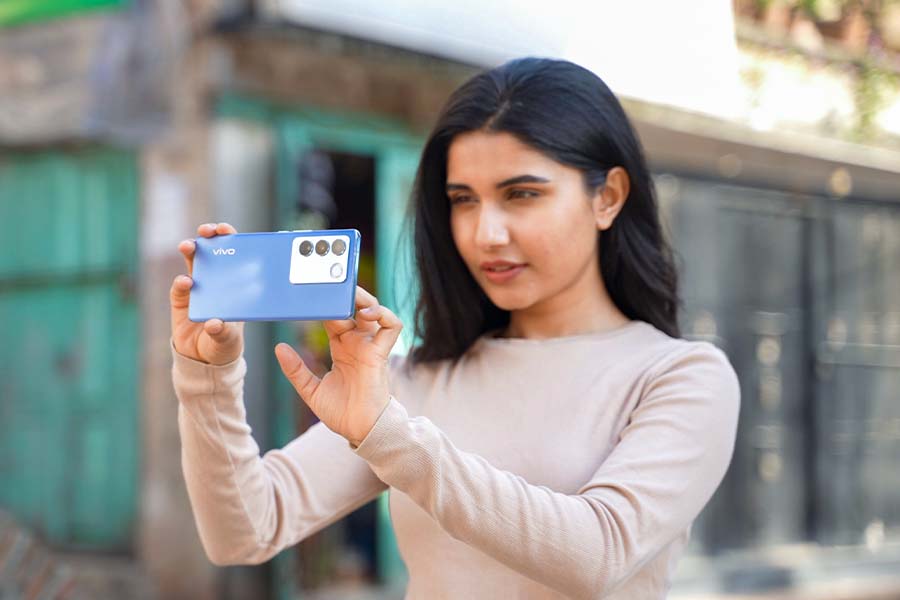
Having said that, I definitely think Vivo has a lot of work cut out for itself in the performance department. Dimensity 7200 is a mighty capable chip on paper and its experience should’ve been much, much better than this. And the fact that Vivo isn’t promising any number of software updates for such a premium phone is pretty disappointing as well.
So unless you’re totally sold on the Vivo V27, then Samsung Galaxy A54 and Nothing Phone (1) are a couple of great alternatives to consider. Besides a fancy design, these phones also bring a premium software experience among other stuff.
- Watch our video review of Vivo V27 (Nepali)
Vivo V27 Review: Pros and Cons
Pros
- Stylish and premium design
- 120Hz curved AMOLED display
- Good primary, selfie cameras
- Nice battery backup
Cons
- No IP rating
- Dimensity 7200 isn’t well optimized
- No guaranteed software updates
- Doesn’t have stereo speakers












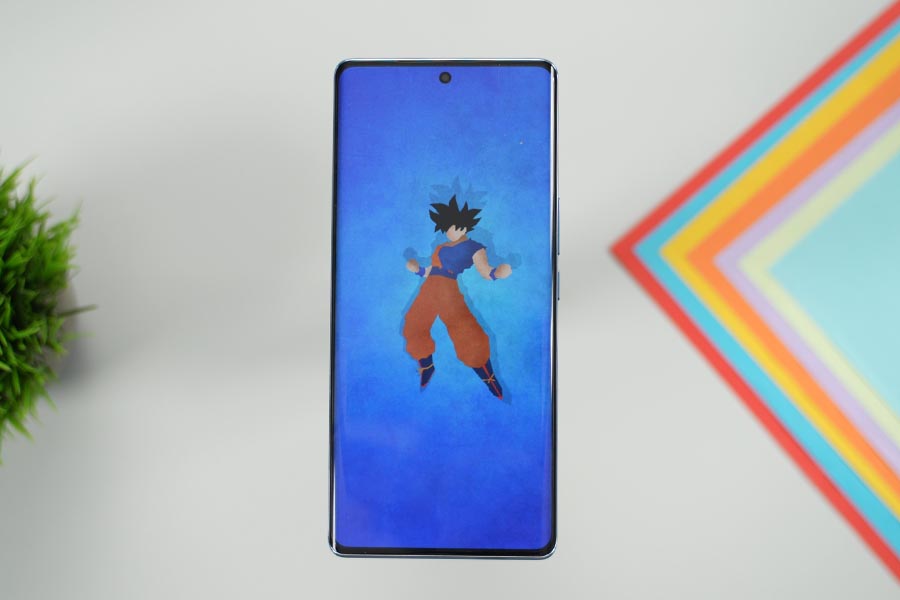





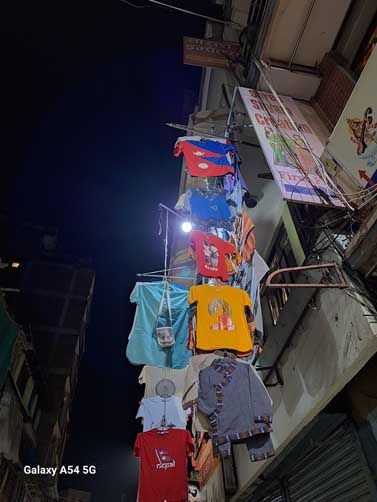

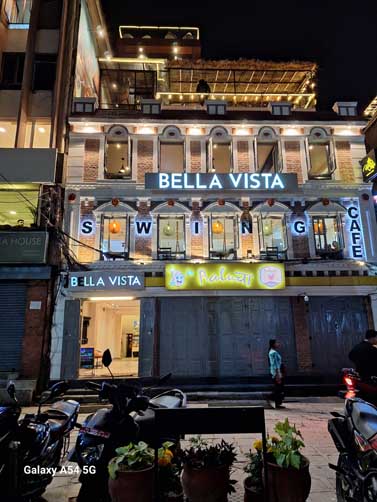






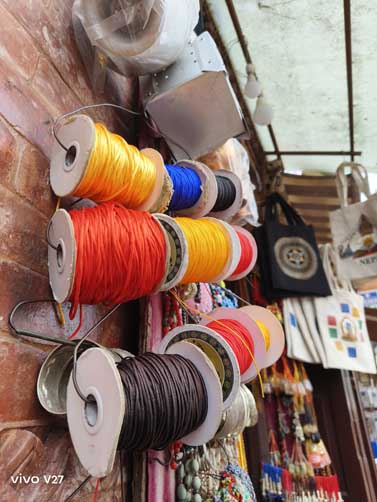




















![Best Ultrabooks To Buy in Nepal 2024 [Updated] Best Ultrabook Laptops in Nepal 2023 - June Update](https://cdn.gadgetbytenepal.com/wp-content/uploads/2023/04/Best-Ultrabook-Laptops-in-Nepal-2023-June-Update.jpg)
![Best Gaming Laptops in Nepal 2024 [Updated] Best Gaming Laptops in Nepal 2023 - June Update](https://cdn.gadgetbytenepal.com/wp-content/uploads/2023/04/Best-Gaming-Laptops-in-Nepal-2023-June-Update.jpg)


![Best Mobile Phones Under Rs. 15,000 in Nepal [Updated] Best Phones Under 15000 in Nepal 2024 Budget Smartphones Cheap Affordable](https://cdn.gadgetbytenepal.com/wp-content/uploads/2024/03/Best-Phones-Under-15000-in-Nepal-2024.jpg)
![Best Mobile Phones Under Rs. 20,000 in Nepal [Updated] Best Mobile Phones Under NPR 20000 in Nepal 2023 Updated Samsung Xiaomi Redmi POCO Realme Narzo Benco](https://cdn.gadgetbytenepal.com/wp-content/uploads/2024/01/Best-Phones-Under-20000-in-Nepal-2024.jpg)
![Best Mobile Phones Under Rs. 30,000 in Nepal [Updated]](https://cdn.gadgetbytenepal.com/wp-content/uploads/2023/12/Best-Phones-Under-30000-in-Nepal-2024.jpg)
![Best Mobile Phones Under Rs. 40,000 in Nepal [Updated] Best Phones Under 40000 in Nepal 2024 Smartphones Mobile Midrange](https://cdn.gadgetbytenepal.com/wp-content/uploads/2024/02/Best-Phones-Under-40000-in-Nepal-2024.jpg)
![Best Mobile Phones Under Rs. 50,000 in Nepal [Updated] Best Phones Under 50000 in Nepal 2024 Smartphones Midrange](https://cdn.gadgetbytenepal.com/wp-content/uploads/2024/02/Best-Phones-Under-50000-in-Nepal-2024.jpg)
![Best Flagship Smartphones To Buy In Nepal [Updated] Best Smartphones in Nepal 2024 Flagship Premium Samsung Apple iPhone Xiaomi OnePlus Honor](https://cdn.gadgetbytenepal.com/wp-content/uploads/2023/09/Best-Smartphones-in-Nepal-2024.jpg)